The constitution of the Japanese Environmental Mutagen Society (JEMS) says, “The society aims to encourage basic research on mutagens in humans, other organisms, and the environment, especially mutagens that affect public health. It also aims to further good communication and the transfer of research techniques in related subjects” (Chapter 4). I believe that JEMS should follow these written objectives of the society precisely and honestly. The main theme of the 31st JEMS annual meting is, “Challenges to Internationalization and Humanization”, and it is the current requirement to the society that member want. On the matter of “Internationalization”, we held the 8th ICEM at Shizuoka last year under the most difficult circumstances and had great success, providing evidence that JEMS is effective internationally. We also played an important role in having our research in this field reflected in regulation considered in international harmonizing activities (i.e., International Workshop on Genotoxicity Testing). On the other hand, to take care global problems, e.g., air and water, international cooperation is important. Our society, however, has made little effort to cooperate with the Asian EM societies with except for a few individuals. JEMS should seek ways to collaborate on problems we share with these countries. We could possibly be a hub for communication between societies that are located in Asian countries. In an effort to do that, we organized the “Asian Environmental Mutagen Societies Forum”, hoping that it would eventually head to an Asian Association of Environmental Mutagen Societies.
The topic of “Humanization” is a most important one. The ultimate goal of our field is the maintaining the highest possible quality of life (QOL), and that includes maintains the environment that affects our QOL directly or indirectly in good condition. For this purpose our society should focus more on human risk assessment, including exposure assessments of environmental mutagens, and molecular epidemiology.
In addition to the main issues mentioned above, our society should orient our research more to the genome than to the detection of environmental mutagens. Also, I think that the society should contribute to regulatory requirement. This includes organizing validation studies of novel technology and establishing strategies on how to evaluate and interpret test data.
From the administrative viewpoint, the organization of JEMS should be more transparent and the responsibilities of the executive and the council should be clarified. Moreover, we need to establish a mechanism for gathering opinions from the membership. On the web, we have started to improve our Home Page and mailing system to permit better communication between the executive board and society members and also among members.
Lastly, I would like to mention the society’s important research activities. Our sub-organizations include the Mammalian Mutagenicity Study Group (MMS), the Bacterial Mutagenicity Study Group (BMS), the Nongenotoxic Carcinogen Study Group (NGCS), the Antimutagenesis and Anticarcinogenesis Study Group (AAS), the FISH Study Group, and Mutag 21. Activation of JEMS, we support all thee groups as official activities of JEMS. Finally, I believe, the most important factor for an active society is the individual contribution of each society member.
抄録全体を表示
